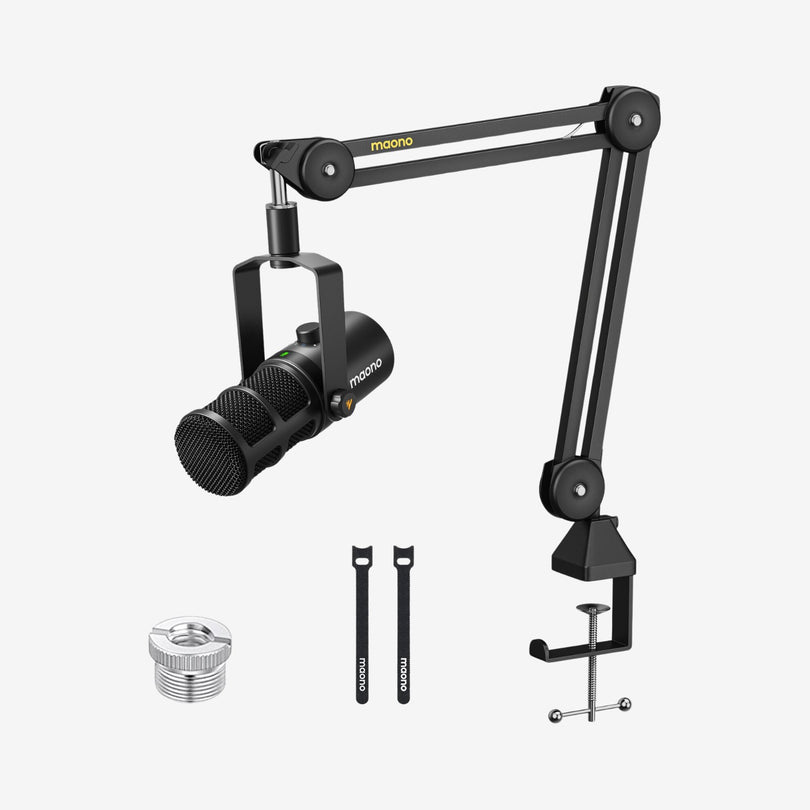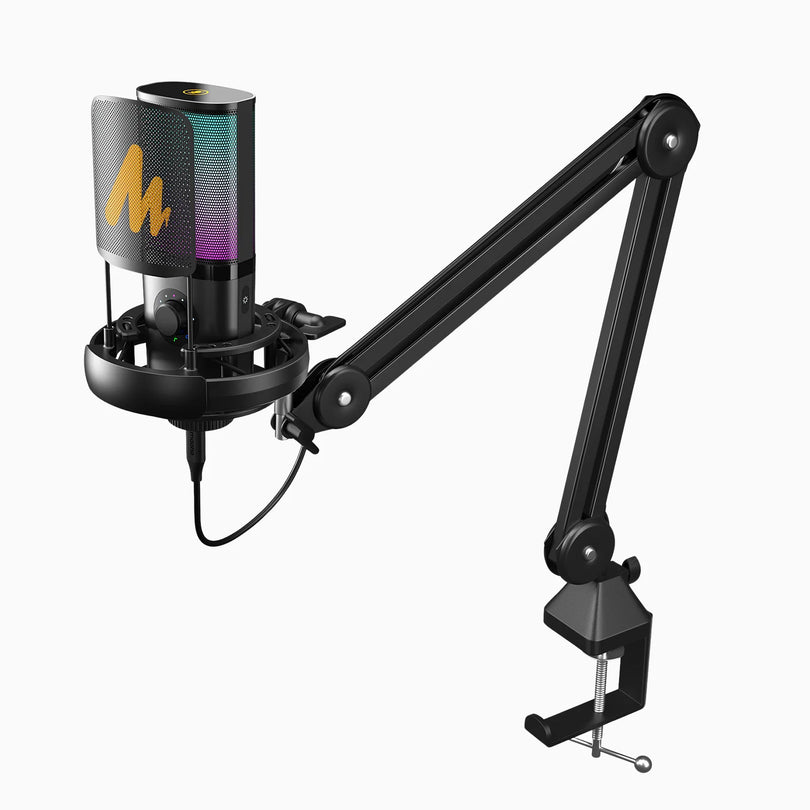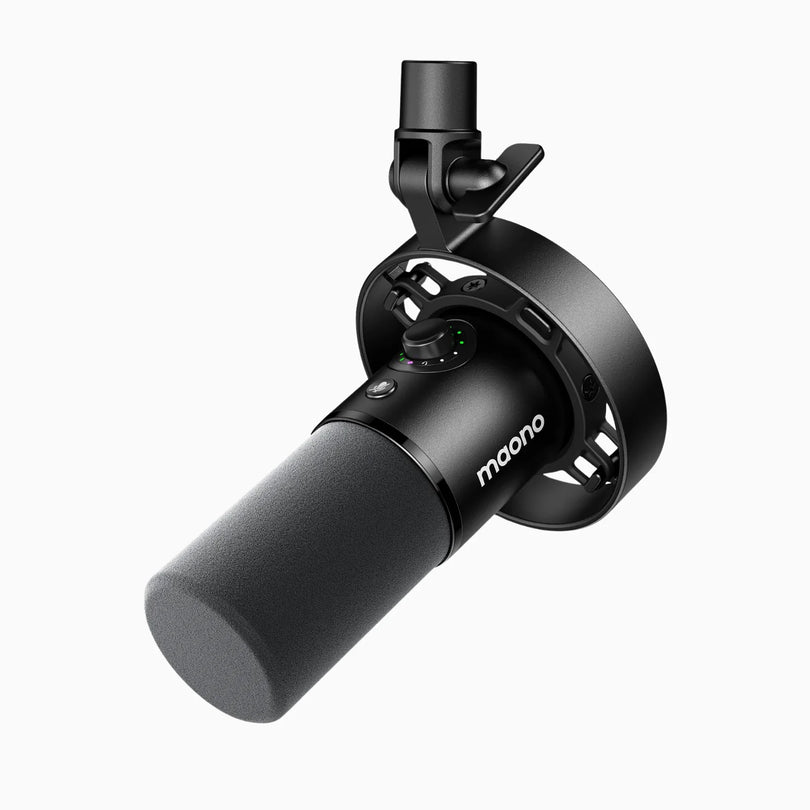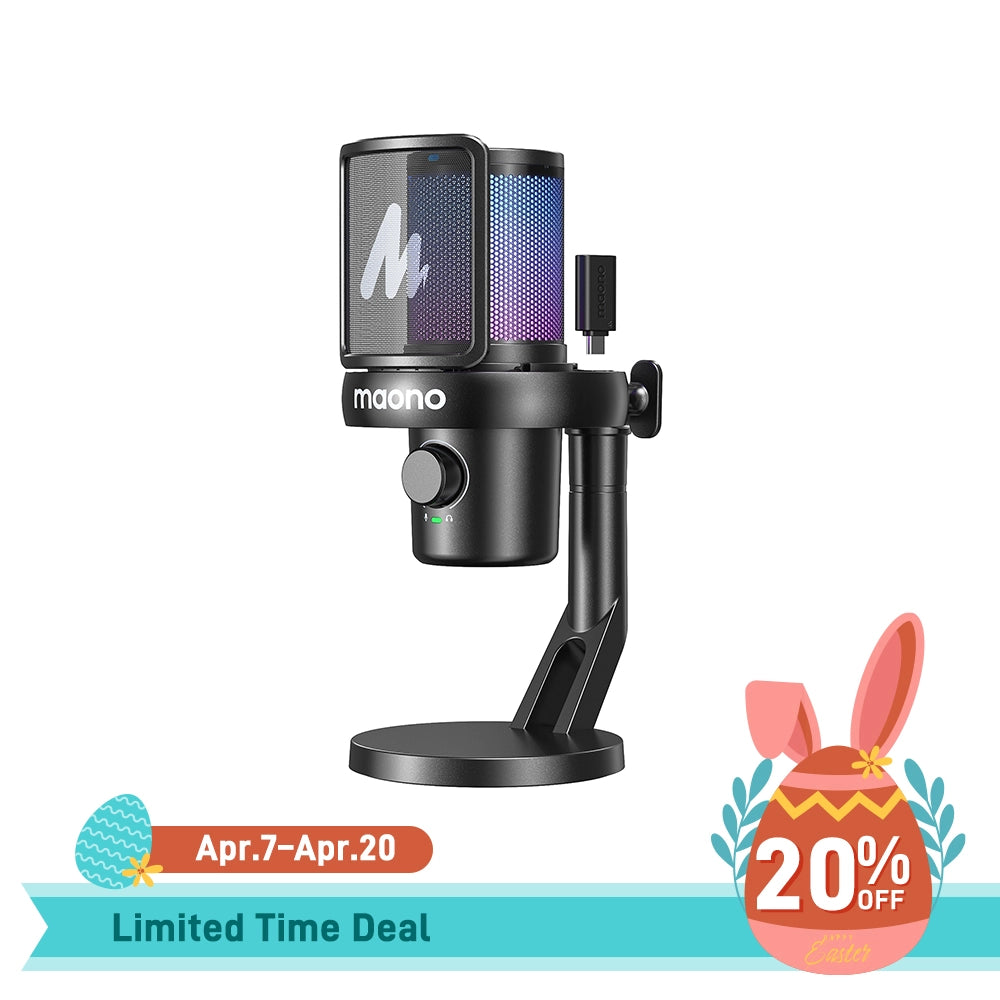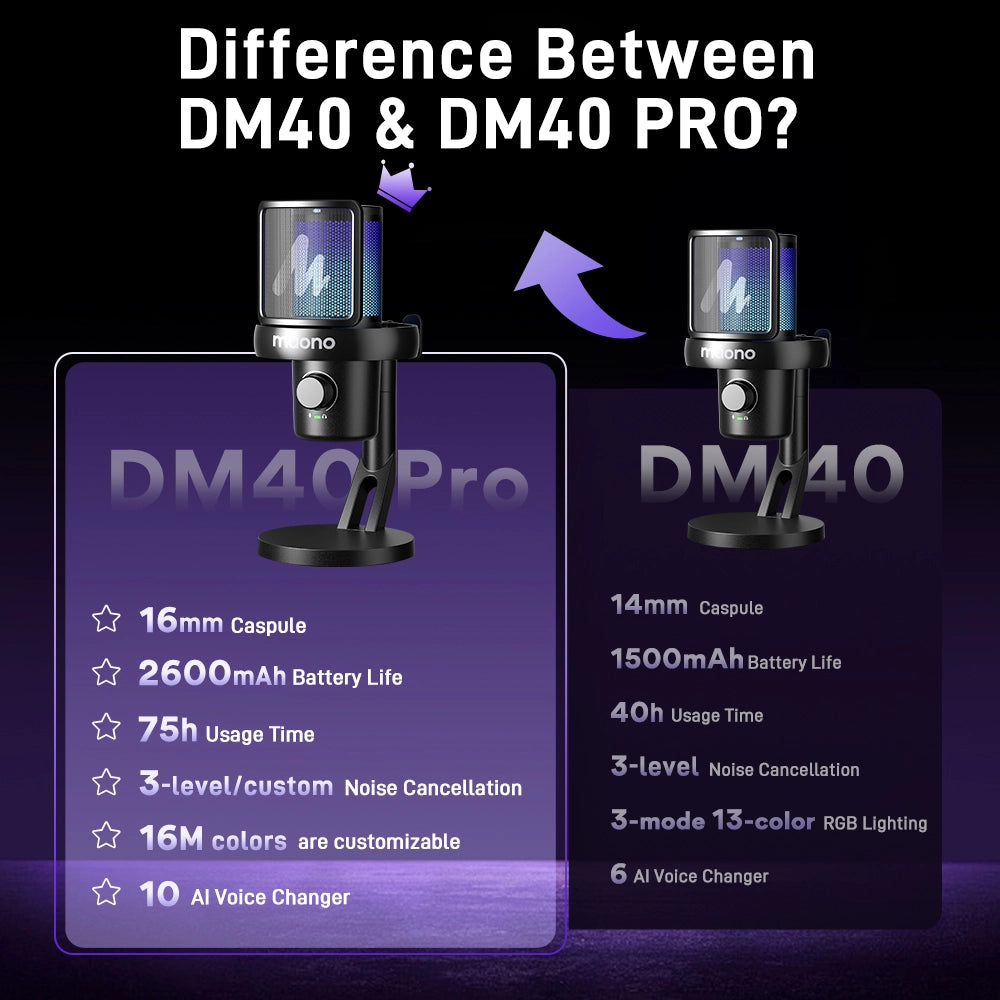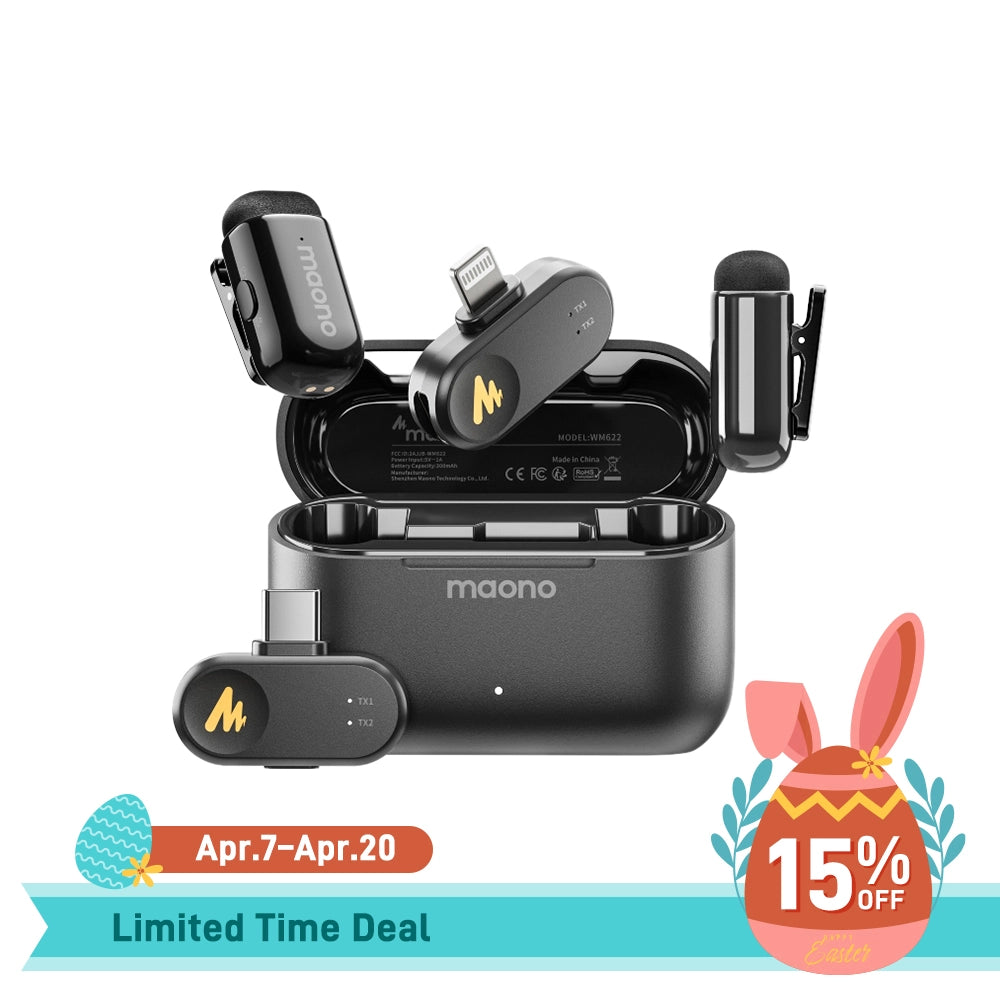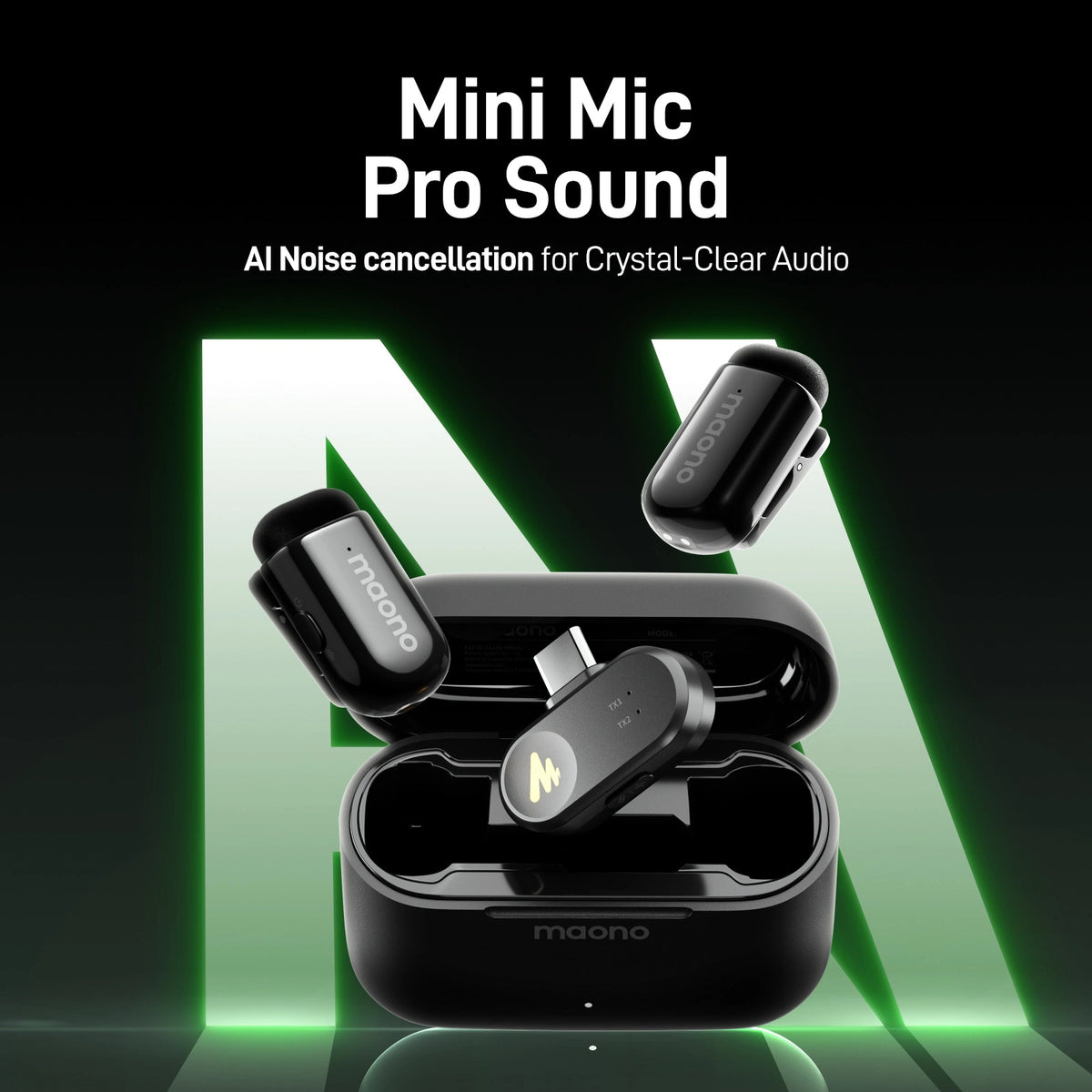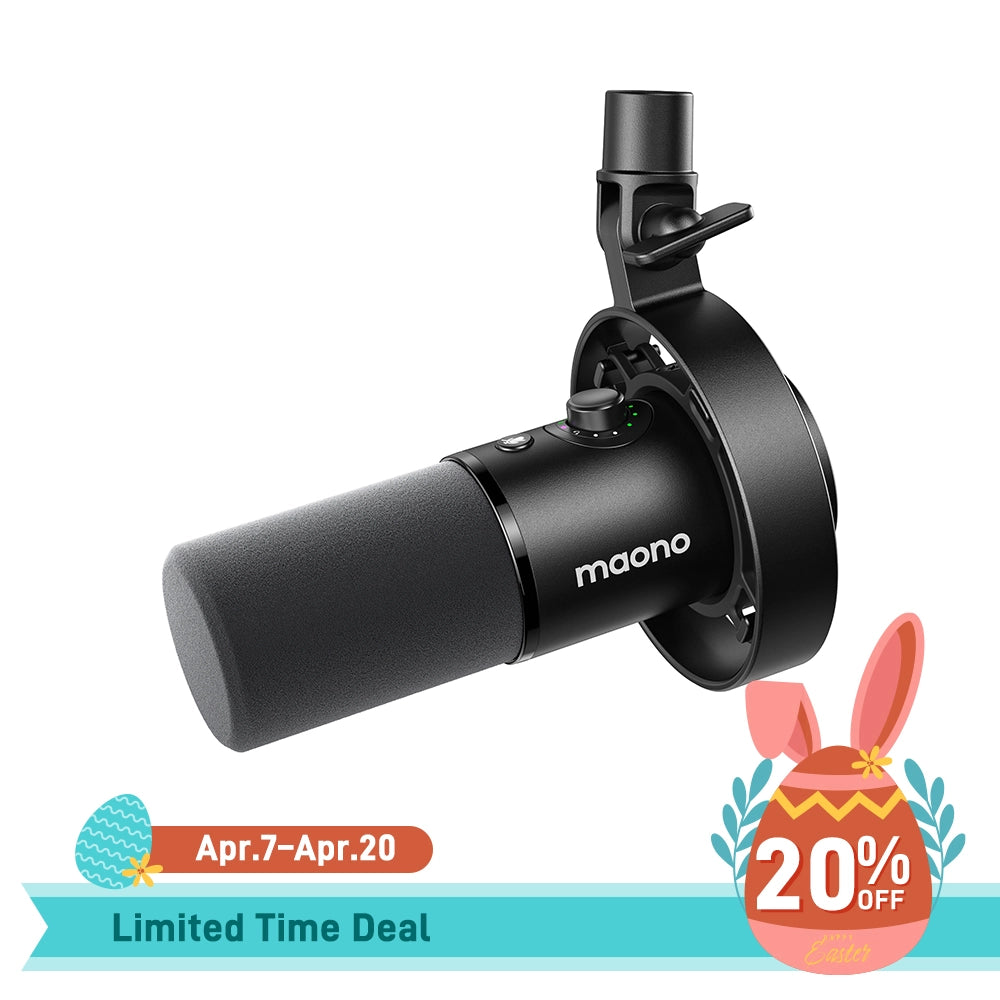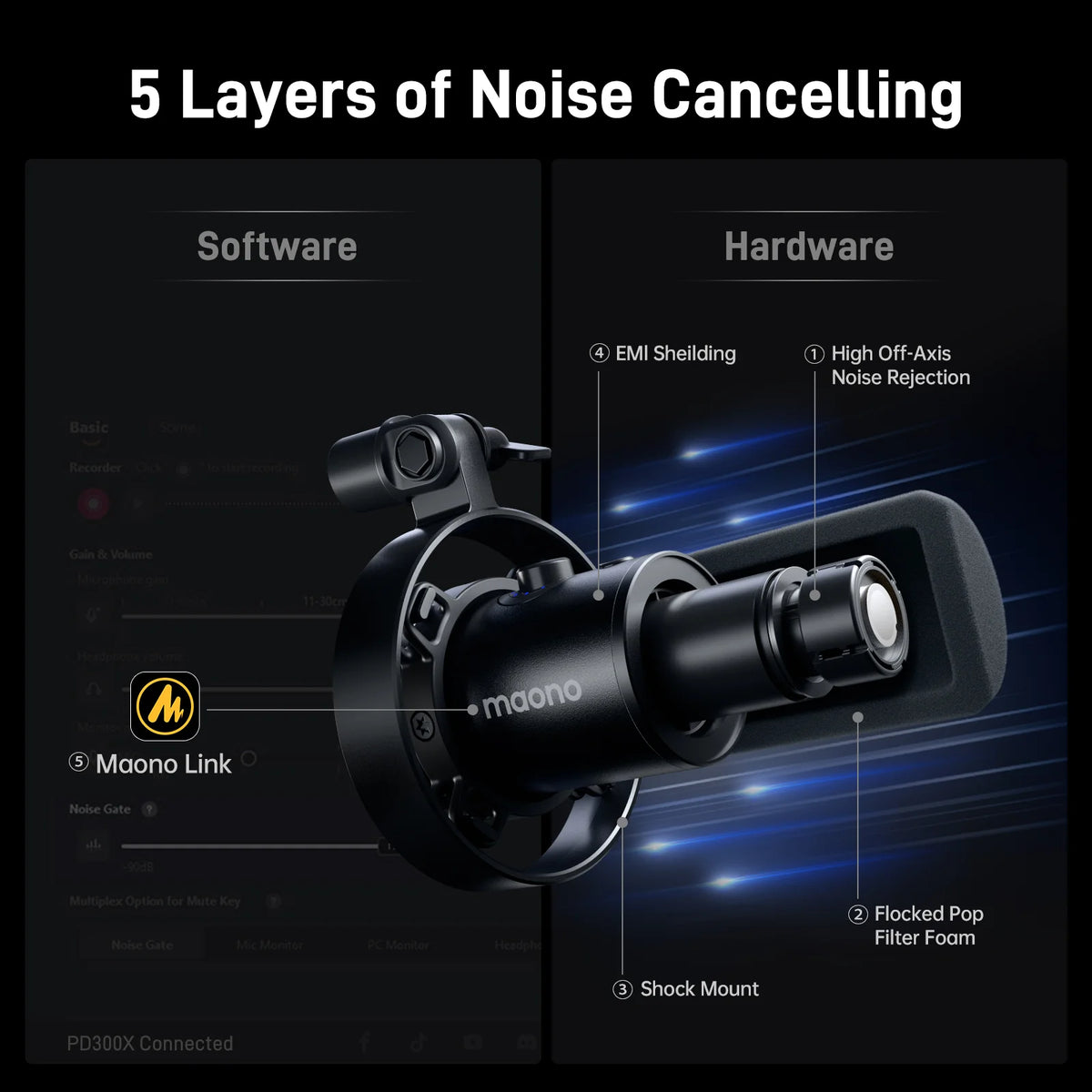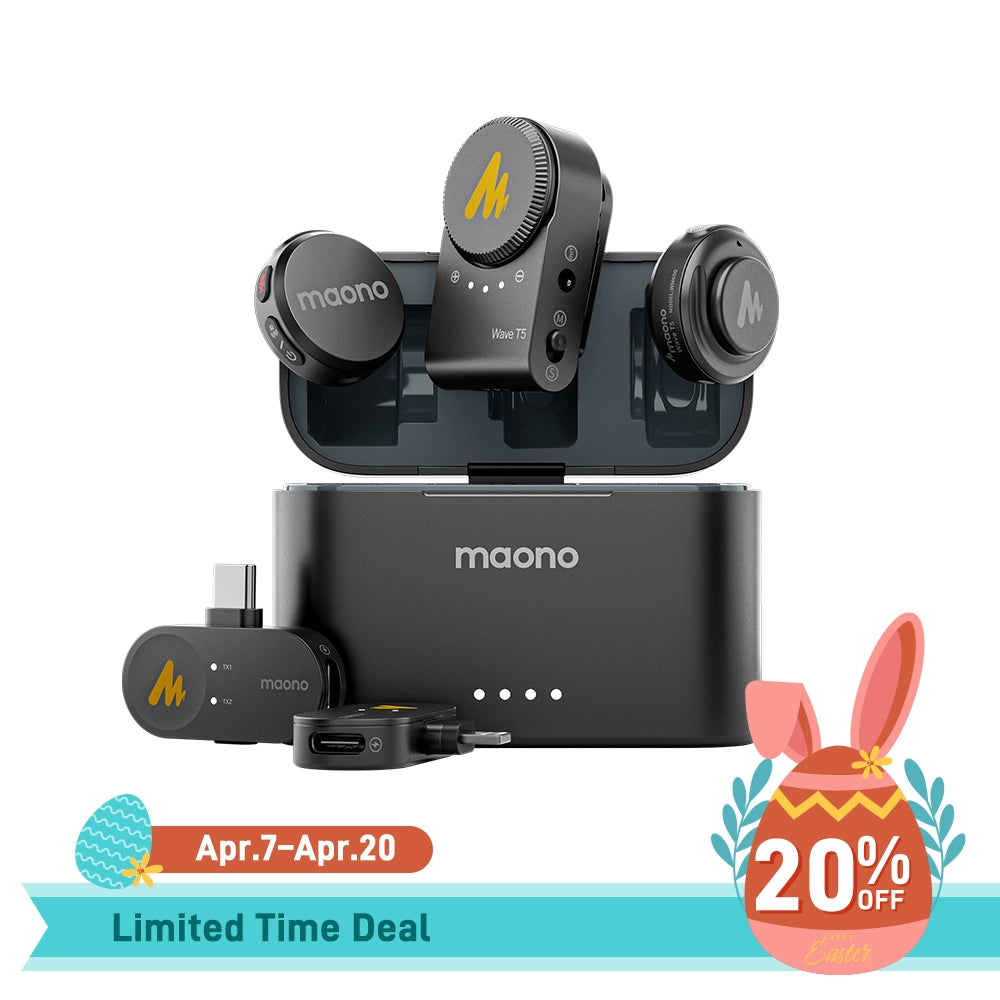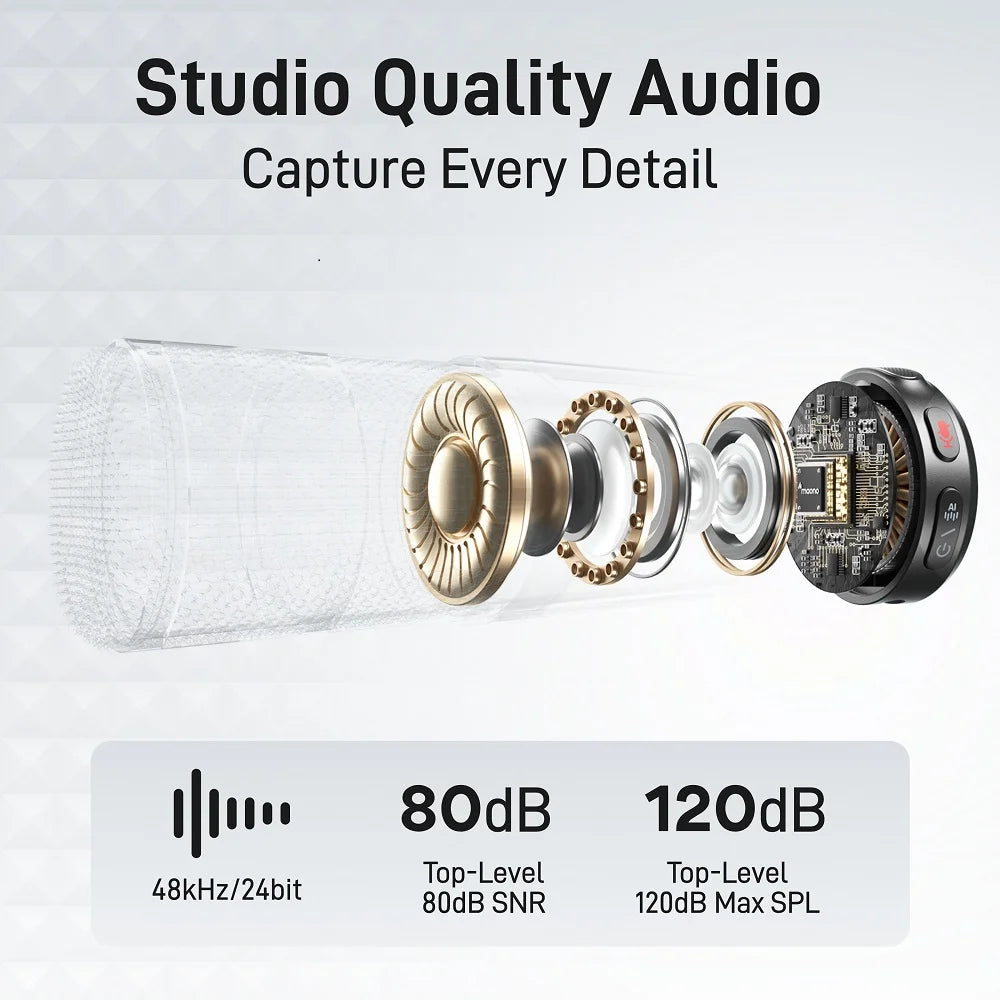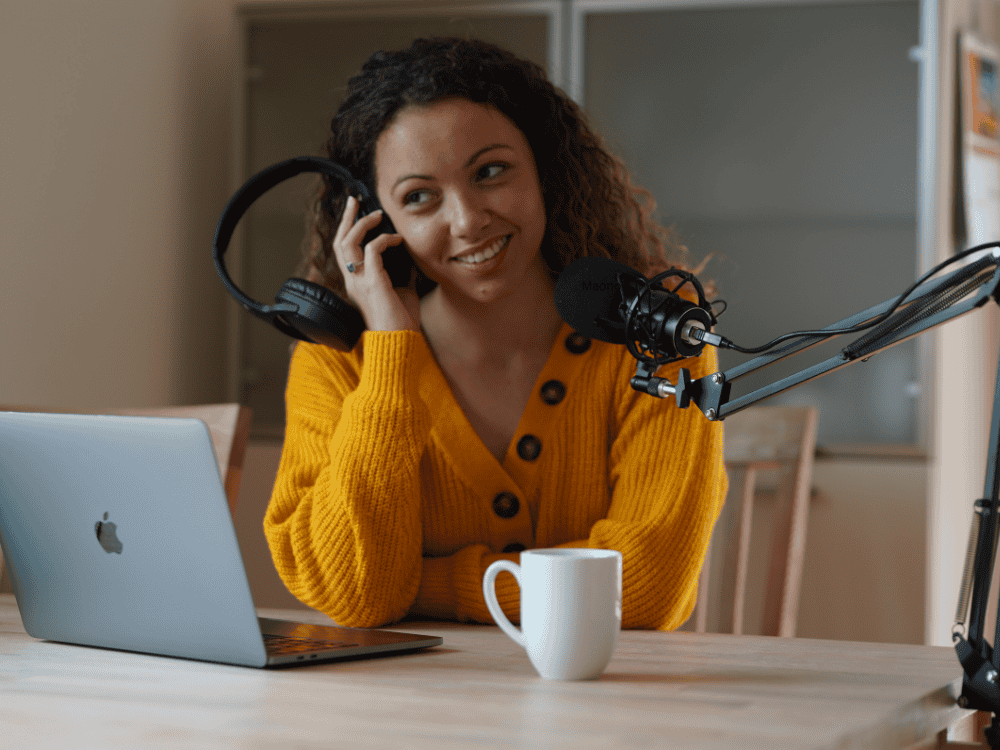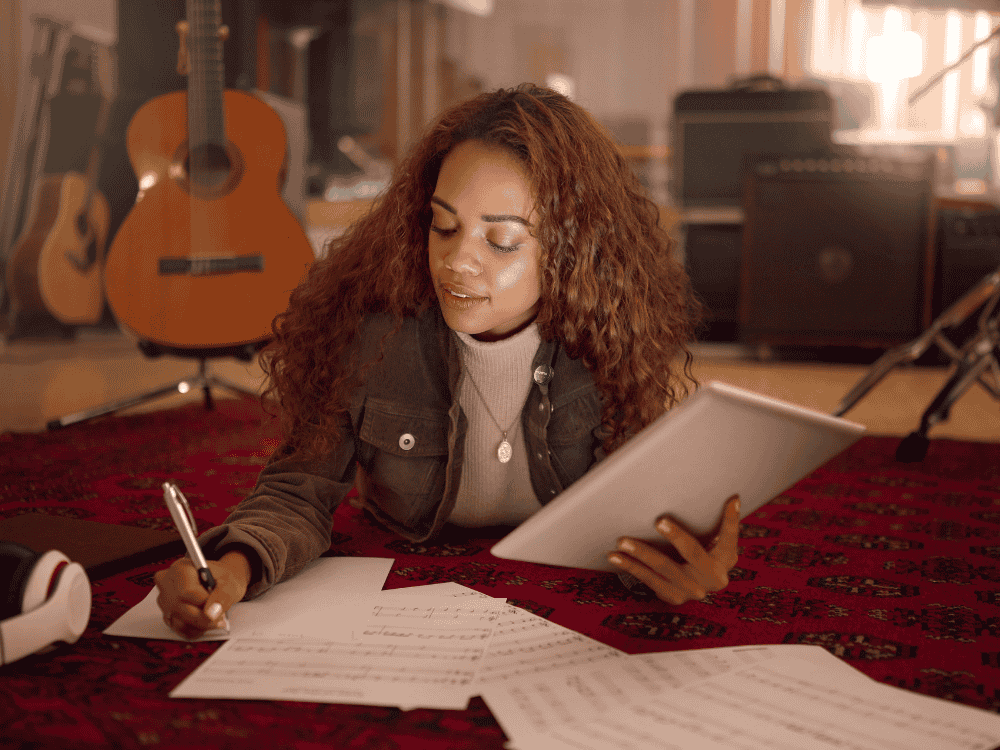When choosing the best microphone for a voice acting, choose a microphone that delivers a clear, professional sound for vocals or voiceovers, because the quality of your microphone can make all the difference in your sound. In this guide, we’ll explore the top-rated microphones for voice recording and provide expert tips for selecting the best mic for voiceovers.
Now let's get started!
What Makes the Best Mic for Voice Over & Voice Recording?
The best microphones are able to capture rich, clear, and detailed sound, ensuring every nuance of the voice is heard. A high-quality mic minimizes background noise, enhances vocal clarity, and delivers a professional recording that meets industry standards, making voice work more engaging and impactful.
Top Picks for the Best Mic for Voiceovers

See our friends from the Maono video series here, if you're looking for an in-depth look at Maono vocal mics. Here are our top picks for the best voice-over microphone:
PD200XS
The Maono PD200XS is a professional USB and XLR dynamic microphone, designed for voice over, voice acting, podcasting, streaming, gaming, and other audio applications, featuring a wide frequency response that captures clear and detailed sound. It comes with a versatile boom arm for precise placement, ensuring optimal audio capture and comfort during extended use.
Pros:
- Dynamic microphone with excellent background noise rejection
- XLR connectivity for professional setups
- Durable build quality
Cons:
- Requires an audio interface or mixer (if you use the XLR)
Why it's great for voice-over:
Its dynamic nature minimizes ambient noise, making it ideal for untreated rooms.
PD400XS
The Maono PD400XS dynamic microphone is a high-quality, cardioid pickup pattern microphone designed for voice over o voice acting, podcasting, streaming, and studio or home recording. It features a wide dynamic range, low self-noise, and a built-in shock mount, making it an excellent choice for capturing clear and natural-sounding audio in a variety of environments.
Pros:
- Hybrid USB/XLR connectivity for versatility
- Built-in gain, mute, and headphone monitoring controls
- Excellent clarity and low noise
Cons:
- Higher price point than entry-level mics
Why it's great for voice-over:
The USB/XLR flexibility makes it perfect for beginners and professionals alike, with high-quality sound and easy setup.
PM500
The MAONO PM500T is a professional XLR condenser microphone with a large 34 mm diaphragm, designed for studio and home recording, voice-over, voice acting, podcasting, and live streaming. It features a cardioid polar pattern, ensuring clear audio capture while minimizing background noise.
Pros:
- Large-diaphragm condenser for rich, detailed sound
- Sturdy all-metal construction
- Wide frequency response
Cons:
- Requires phantom power (XLR only)
Why it's great for voice-over:
Its superior audio detail captures the nuances of the voice, making it ideal for professional voice-over work.
PM422
The MAONO PM422 is a professional USB condenser microphone designed specifically for recording voice over, voice acting, musical instruments, podcasting, and streaming, offering clear audio quality with a cardioid pickup pattern for optimal voice capture. This microphone features a shock mount and pop filter to minimize unwanted noise, ensuring a clean and professional audio experience.
Pros:
- USB plug-and-play simplicity
- Built-in mute button and gain control
- Cardioid polar pattern for focused sound
Cons:
- Less versatile than XLR mics
Why it's great for voice-over:
Affordable and user-friendly, it’s perfect for beginners who want good sound quality without complex setups.
A04
A04 is a professional USB condenser microphone kit that includes a cardioid condenser microphone, adjustable scissor arm stand, shock mount, pop filter, and all necessary cables and accessories. It is designed for voice over or voice acting, podcasting, recording, gaming, and home studio use, and features a 16 mm large diaphragm for capturing clear, rich audio.
Pros:
- Budget-friendly with decent audio quality
- USB connectivity for quick setup
- Includes accessories like a pop filter and shock mount
Cons:
- Basic sound quality compared to higher-end models
Why it's great for voice-over:
An excellent entry-level option for those starting in voice-over, providing reliable performance at an affordable price.
Top Features to Look for in the Best microphone for Voice Over
Making the best decision for choosing the best voice over mic requires an understanding of the various microphone types and their unique features.
- Condenser vs. Dynamic
Condenser microphones offer greater sensitivity and detailed sound capture, making them ideal for voice-over work. Dynamic microphones are more robust, handle higher sound pressure levels, and are often used for live performances. The best microphone for vocals depends on how you will use it. A dynamic mic is the best choice if you're a musician planning live performances. However, if you're using the mic in a home studio, it's wise to choose a condenser mic, which has higher sensitivity and captures more detailed sound.
- Pickup Pattern
This tells you which direction the microphone will pick up sound from.
- Cardioid
The most common pickup pattern for voice-over mics captures sound mainly from the front and reduces background noise.
- Omnidirectional
Picks up sound from all directions equally, making it great for recording background noise.
- Bidirectional (Figure-8)
Picks up sound equally from the front and back, making it useful for interviews and group recordings.
- Frequency Response
This means the range of sounds a microphone can pick up. A mic with a wider range will capture more details and subtle tones in the voice.
- Sensitivity
Measures how well a microphone picks up sound. Highly sensitive microphones capture quieter sounds but can be prone to noise.
A good mic for voice acting or voice over excels in sound quality by capturing clear, rich, and natural audio with a wide frequency range, ensuring every vocal nuance is preserved. It should also offer noise isolation, effectively minimizing background noise and room ambiance to produce clean, professional recordings. Features like a cardioid polar pattern, high sensitivity, and low self-noise contribute to superior sound clarity and focus.
How to Choose the Right Microphone for Recording Voice Over
To help you make a decision and choose the microphone that best meets your demands, take into account the following factors:
- Budget
The cost of microphones varies from affordable to expensive. Determine your spending limit before looking into specific models.
- Sound Signature
Which type of sound is better for you—brighter, crisper, or warmer, fuller? Research microphones are known for their distinct sound characteristics.
- Recording Environment
It is best to have a private, quiet recording area. When background noise is prevalent, it is imperative to have a microphone with strong noise cancellation.
- Experience Level
A convenient USB condenser microphone is a fantastic place to start if you're new to voice-over. Consider purchasing an XLR microphone for higher quality and professional sound as you advance.
Gear Up for Success: Must-Have Essentials in Sound Recording, Including Audio Interfaces
Apart from a microphone, you need extra essentials to make recordings sound top-notch. Take note of the following:
- Audio Interface
This device connects your microphone to your computer and converts analog audio signals into digital ones for recording. An audio interface is essential for using professional microphones with XLR connections.
- Pop Filter
This shield prevents plosive sounds (like 'p' and 'b') from creating unwanted pops and clicks in your audio.
- Headphones
Essential for monitoring your recordings and ensuring audio quality. Headphones with a flat frequency response are ideal for accurate sound monitoring.
- Recording Software
Software like Audacity (free) or Adobe Audition (paid) allows you to record, edit, and mix your voice-over files.
Tips on Recording Professional Quality Voice Over
1. Choose a Quiet Recording Space
Find a quiet, well-insulated room to minimize background noise.
2. Position Your Microphone Correctly
Position the microphone close enough to your mouth to capture your voice clearly but not so close that it creates a proximity effect (a booming, unnatural sound).
3. Optimize Room Acoustics
Use acoustic panels or blankets to absorb sound reflections and create a clearer audio recording.
4. Practice Proper Microphone Technique
Speak clearly and at a consistent distance from the microphone.
5. Edit and Enhance Your Recordings
Use your recording software to edit out any extraneous sounds, adjust volume levels, and even apply subtle effects to enhance your audio.
FAQs:
What is the best mic for voice acting?
The Maono PD400X is an excellent choice for voice acting. It offers high-quality sound with a cardioid polar pattern, low self-noise, and versatile connectivity options, making it ideal for both beginners and professionals.
What microphone do professional voice-over artists use?
Pros or beginners use the Maono PD400X for content creation and voice-over use. Many professional voice-over artists also use the Shure SM7B or the Neumann U87. These microphones are known for their exceptional sound quality, durability, and ability to capture rich, detailed voices.
Is a USB microphone good for voice acting?
A USB microphone can be great for voice acting, especially for beginners or those with a smaller budget. Models like the Blue Yeti and Maono PD400X offer plug-and-play functionality and good sound quality, making them suitable for home studios. However, XLR microphones generally provide superior audio quality and flexibility for more professional setups.
Conclusion
Finding and investing in the best mic for voiceovers is an investment in your success, as it can transform your voice-over or voice acting career. As discussed above, understanding the features and key elements will guide you toward a microphone that complements your voice and elevates your recordings. With the right equipment, you'll be well on your way to producing high-quality voice-over work that captures your unique talent and projects your message with clarity and impact. Remember, the journey begins with choosing the best mic for voiceovers to amplify your voice. Explore our recommended best microphones for voice recording and take your audio quality to the next level.
Related Articles:
Mark Sparrow Reviews Maono PD400X Dynamic Microphone for Voice-Over on Forbes
Mastering the Art of Voiceover Audio Mixer: Techniques and Tips


